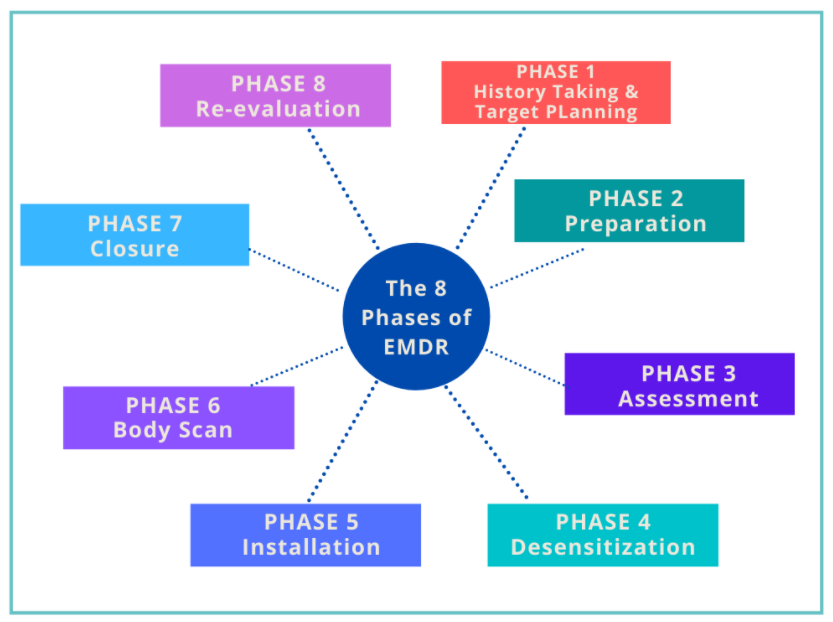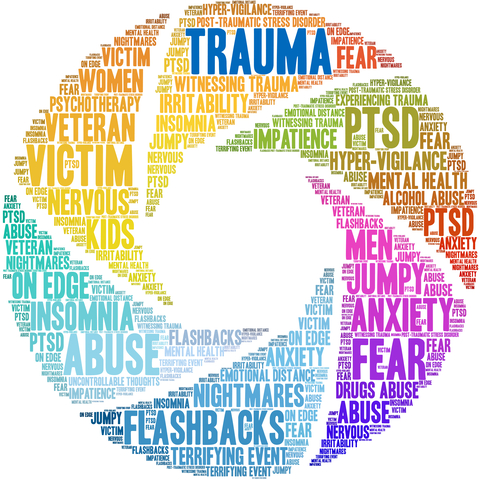
Have you ever witnessed or been in a car accident or lost a friendship? If you have, you may have experienced trauma. Trauma can be anything from experiencing or witnessing a threatening life event (such as a car accident or physical abuse) to experiencing continual distressing or disturbing situations (e.g., being bullied, losing a friendship, breaking up with a significant other, experiencing neglect as a child, etc.). When people experience trauma, the brain sometimes has a hard time processing what happened. This unprocessed trauma might leave traumatized individuals behaving, thinking, and/or responding in ways that are out of the ordinary for them. For example, people might respond by isolating themselves from others or having tantrums or mood swings, thinking they are shameful or not good enough, having nightmares or flashbacks about what they experienced, or becoming easily startled or fearful of things that would not have affected them prior to the trauma. Trauma memories and sensations that have been processed make it easier to encounter things connected to the trauma without experiencing distress. One effective way to process these memories and sensations and heal from trauma is by engaging in a therapy called Eye Movement Desensitization and Reprocessing, which is typically referred to as EMDR.
What is EMDR, and How Does It Work?
EMDR therapy is an evidenced-based, three-pronged, eight-phase approach to treating trauma as well as other issues, including depression, anxiety, and self-esteem. It focuses on past memories, present triggers or disturbances, and challenges that might impact a person in the future.
EMDR therapy works by using dual attention or bilateral stimulation (which consists of alternating left, right stimulation using tapping, eye movements, auditory tones, or tactile methods such as buzzies or theratappers) to activate both sides of your brain. During EMDR, you engage in dual or bilateral stimulation while focusing on memories, sensations, or experiences that are distressing in order to help your brain organize and store the memories, feelings, and sensations associated with traumatic events. This means less vivid trauma memories and reduced levels of distress related to what happened.
Who Can Benefit From EMDR Therapy?
EMDR therapy works for children as young as age 2, adolescents, and adults. It has been proven beneficial for individuals, including first responders and veterans, who are experiencing post-traumatic stress disorder, depression, anxiety, panic, and other concerns. People who have a hard time talking about or even remembering their trauma experiences might benefit.
How is EMDR Different From Traditional Talk Therapy?
Detailed trauma story not needed. In traditional therapy models, people usually need to tell their stories as part of the healing process. However, in EMDR treatment, people can process their trauma without telling their stories in the same amount of detail as other talk therapy treatments. In EMDR, the target or memory you share may be as short as “the incident with dad when I was 5.”
Targets the body as well as the mind. Trauma is more than traumatic memories and situations. People store and feel trauma as well as anxiety in their bodies. Even when a person does not remember a traumatic incident, his or her body does. EMDR focuses on both the physical sensations and memories of trauma experiences.
Targets preverbal trauma. Trauma can happen before language is fully developed. Because EMDR focuses on sensations and not just memories, birth and early childhood trauma incidents that someone might not remember but might have an impact still can be processed.
Can be a short-term treatment. EMDR treatment can be completed in as little as one session or over the course of several sessions. How long it takes depends on individual needs, complexity of trauma, levels of distress and trauma symptoms.
The 8 Phases of EMDR Treatment

Phase 1. The first phase of EMDR therapy is history taking and treatment planning which involves gathering relevant information and setting up targets for processing in later phases.
Phase 2. The second phase is preparation. During this phase, individuals learn and practice stress reduction and relaxation skills for coping with overwhelming emotions and sensations that might occur during processing. In addition, the person will learn how to dual attention/bilateral stimulation techniques. This phase can take as little as one session or several sessions depending on a person’s level of distress and readiness for processing.
Phases 3 through 7. These phases typically take place within the same session. During the assessment phase, you identify and confirm the memory, sensation, or target that represents the trauma or problem you plan to process. Usually, this is the first or most disturbing time you experienced the problem. Afterward, you identify what you believe about yourself or the problem and what you would like to believe instead. You then transition to the desensitization phase, during which bilateral or dual attention stimulation is combined with free association to actually process or reprocess memories, sensations, feelings, and beliefs related to one’s trauma experience. Throughout this process, the EMDR therapist keeps track of how distressing the experience remains for you. Once you report a significant decrease in your level of distress, bilateral stimulation is used to install and strengthen positive beliefs or cognitions about one’s self and/or the situation/trauma experience.
After you have finished processing and installing your positive beliefs, you scan your body to check for unusual sensations or tension. At the end of the session is Phase 7, closure. The therapist will debrief and remind you of the processing that might take place after you leave the session.
Phase 8. The last phase of EMDR treatment is re-evaluation. This phase actually takes place at the beginning of the next session after you have processed/reprocessed a target memory or problem.
You can also learn more about EMDR by accessing the resources below.
- EMDRIA https://www.emdria.org/about-emdr-therapy/
- EMDR Demonstration Videos

